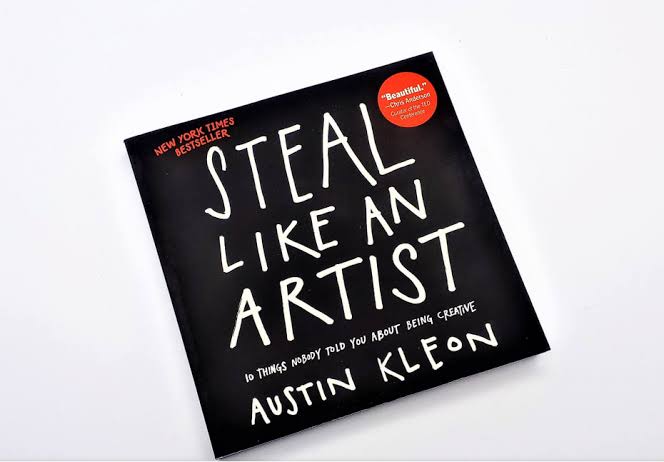“Steal Like An Artist” Book Summary | Quick Reads For Busy Minds epi 3
Welcome to “Quick Reads for Busy Minds,” a blog series tailored for the vast and bustling community of individuals with limited time but an insatiable thirst for knowledge. In each article delight, we’ll unravel the essence of a thought-provoking book, distilling its key takeaways into a concise 10-minute read. Whether you’re a professional navigating a hectic schedule or someone seeking intellectual nourishment on the go, this series aims to provide you with insightful summaries that capture the heart of each book, empowering you to absorb wisdom in a fraction of the time. Episode 3 presents “Steal Like An Artist” book summary that says it’s okay to borrow ideas from your heroes and use them to inspire your own style. Have fun and create a good environment for your art. Don’t let criticism or praise stop you from making what you love.
Grab a moment in your day, and let’s get started on this literary expedition together.
Today’s Book: Steal Like an Artist by Austin Kleon
“Steal Like An Artist” Book Summary | Key lessons & insights
You’ll find your own style where you fail to imitate your idols.
The phrase “art is theft” belongs to the prominent Spanish painter Pablo Picasso. It suggests that each masterpiece is a subtle imitation of another one. You can call it indirect inspiration or musing to make it sound more pleasant. Yet it’s the truth: most of the ideas today grow out of older ones or are simply a continuation of them. So, don’t feel guilty if you find a better application or interpretation for someone else’s vision.Austin Kleon encourages readers to surround themselves with material from which they can “steal.” Thus, read books, watch videos, or listen to podcasts.
Make taking notes your daily habit. Write down the quotations from books, ads, films, or conversations between strangers. These notes don’t have to be entirely relevant to your ongoing project; consider any eye-opening idea an investment for future artwork. It’s also sound to keep all your observations in one place; this way, you’ll create your own “bank” of inspiration triggers. Next time you have to come up with a new design or text, revise your jottings.
It’s okay to procrastinate as an artist. Actually, you should!
Being an artist is one of few professions where procrastination is actually quite productive. Because sudden insights and flashes of genius occur during down-time, when you let your mind wander, it’s a good idea to make that down-time part of your routine. But don’t let the balance tilt entirely to its side. If you play the piano, love to sing karaoke or tend to your garden, keep doing it. It’ll be the source of many new ideas for your paintings, writings or song lyrics.
Limit technology’s use and critical judgments to keep the creative process captivating
It isn’t art if there isn’t some imperfection in it. Feel free to go back to the paper and dirty easel and enjoy how your idea evolves naturally, without technological constraints. Moreover, it’s helpful to have two different creative workspaces. One should be full of sticky notes, papers, and markers. It’s a place for toying with ideas, organizing your thoughts, and preparing drafts. When the first version is ready, you can move to the second space, equipped with electronic devices, and enhance your creations.
The path to true creativity will first take you out of your comfort zone
Sometimes it is mental, but often it is your physical location. For instance, your home can become too dull to carry out any creative activity. In such cases, you should find a different place you can regularly visit when you want to get creative. Bring your notepad with you all the time. While waiting for the order, commuting to work, or sitting in a queue to a hairdresser, make notes.
The World Is A Small Town | Be Nice
You need to be nice to people around you. If you like their work, be appreciative and show your support however small the effort might seem. Don’t feed on the negative things. The most important thing is you show appreciation without any expectation in return. It may be online or offline.
Creativity Is Subtraction
Choose what to leave out. Figuring out what to leave out will get you way ahead. Placing constraints can bring you back into the creative zone. When it comes to creative work, limitations mean freedom. Don’t make excuses instead you can build something with what you have. Limitations can bring in better innovations you may have never thought about.
Final Takeaway
Having read “Steal Like An Artist” Book Summary you have now access to actionable strategies that can enhance your creative endeavors. It shows you how to be stealing ideas from others in a noble way and adding your ideas.The ideas shared in the book apply to anyone who is trying to have some creative aspect added to their personal and professional life. It shows you how to find inspiration from others, have fun making art, and stay true to yourself
Where Can you Buy the Book : https://amzn.eu/d/jkAFfFL
